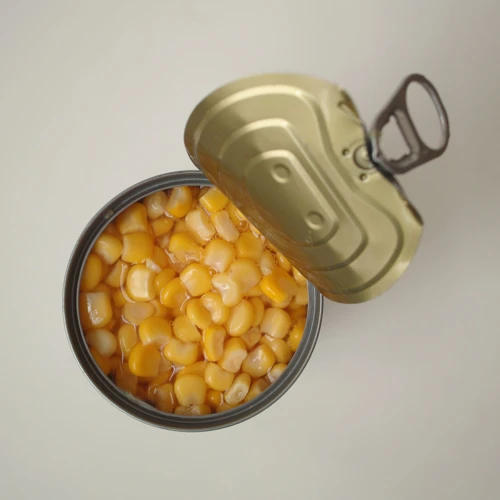Have you ever found yourself staring at an expiration date on a food item, wondering whether it’s still safe to consume? Do you struggle with managing the shelf life of items when buying in bulk? Understanding expiration dates and shelf life can be a perplexing task, but it’s essential to ensure the safety and quality of the food we eat. In this article, we will explore the meaning of expiration dates and shelf life, why they’re important, and provide tips for managing them. We’ll also highlight common misconceptions and offer smart purchasing habits for reducing waste while enjoying the benefits of buying in bulk for healthy eating. Let’s dive in and unravel the mysteries of expiration dates and shelf life together.
What are Expiration Dates and Shelf Life?
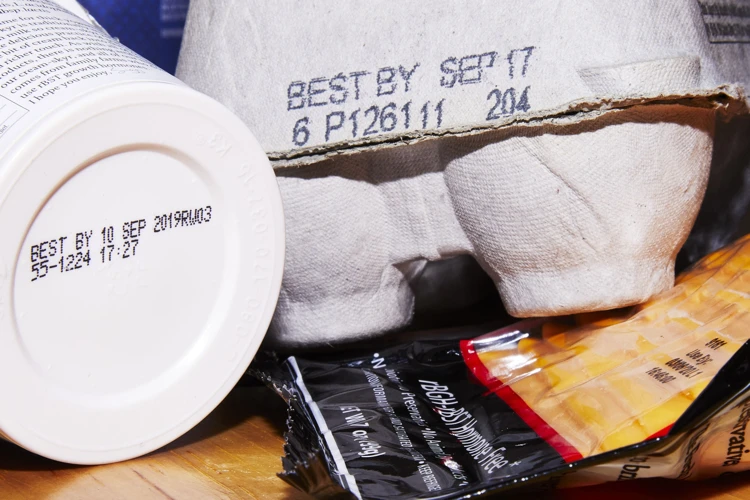
Expiration dates and shelf life are important concepts when it comes to purchasing and consuming food in bulk. Expiration dates indicate the date until which a food product is safe to consume, while shelf life refers to the length of time a product can be stored before it spoils.
Expiration dates are typically found on perishable foods that can spoil or become unsafe to eat over time. These include items such as dairy products, meats, and prepared foods. It’s important to pay attention to expiration dates and avoid eating food that has gone beyond the date indicated on the package. This is especially true for individuals with weakened immune systems or those at higher risk for foodborne illness.
Shelf life, on the other hand, refers to the amount of time food can be stored before it loses its quality or spoils. This is relevant for non-perishable items like canned goods or dried foods, and also for perishable items like fresh produce. Proper storage can help extend the shelf life of these products, but it’s still important to check for signs of spoilage before consuming.
Understanding expiration dates and shelf life is important for both food safety and reducing food waste. It’s important to know when to discard food that may be unsafe to eat, but also to make sure that food is not thrown away prematurely. By properly managing expiration dates and shelf life, we can reduce our impact on the environment and save money on food waste.
To learn more about managing food in bulk for a healthy diet, check out our article on bulk buying for healthy eating.
Expiration Dates
When purchasing food items in bulk, it is crucial to understand the concept of expiration dates. The expiration date indicates the date until which the product is safe for consumption. It is typically found on perishable items such as dairy, meat, and bakery products. Ignoring the expiration date can lead to food poisoning or other illnesses caused by the growth of bacteria or mold. By being aware of these dates, you can prevent unnecessary waste and ensure that the food you consume is safe to eat. It is also essential to note that expired food does not always have to be thrown out as some products can still be edible after their expiration date. Understanding expiration dates can help you make smart purchasing decisions and reduce food waste. Learn more about buying in bulk for healthy eating in our guide to buying healthy staples in bulk.
Shelf Life
Shelf life refers to the time period during which a product can maintain its quality and freshness without the risk of spoilage. It is important to understand the shelf life of the products you purchase in bulk, as it can impact how long you can store and use them.
Factors that Affect Shelf Life:
- Product Type: Different products have varying shelf lives, which can be influenced by factors such as their moisture content, acidity level, and whether they are perishable or non-perishable.
- Packaging: Products that are stored in air-tight and properly sealed packaging can typically last longer than those stored in containers that allow air and moisture to leak in.
- Storage Conditions: The temperature and humidity levels of the storage area can significantly affect the shelf life of bulk products. Products that are stored in cool, dry places are likely to last longer than those stored in warm, damp areas.
Common Shelf Life Indicators:
- “Sell By” Date: This date is a guideline for retailers to know how long to display the product for sale. It does not necessarily mean that the product is no longer safe to consume beyond this date.
- “Best By” Date: This date refers to the peak freshness and quality of a product, but does not necessarily indicate that it is unsafe to consume after the given date.
- “Use By” Date: This date is the last date recommended for the use of the product while at peak quality. It is important to consume or discard products before their use-by date.
It is important to keep track of the shelf life of your bulk purchases and consume them before they expire in order to avoid waste and ensure safety. Storage methods such as freezing, canning, and pickling can also help prolong the shelf life of certain products.
Consider incorporating a variety of healthy staples into your bulk diet, buying fresh produce in bulk, and exploring bulk meat and fish options for healthy eating. You can also save money by purchasing healthy snacks in bulk for work or travel. By understanding expiration dates and shelf life, you can make smarter purchasing decisions and reduce food waste, while still enjoying the benefits of buying in bulk.
Why is it Important to Understand Expiration Dates and Shelf Life?
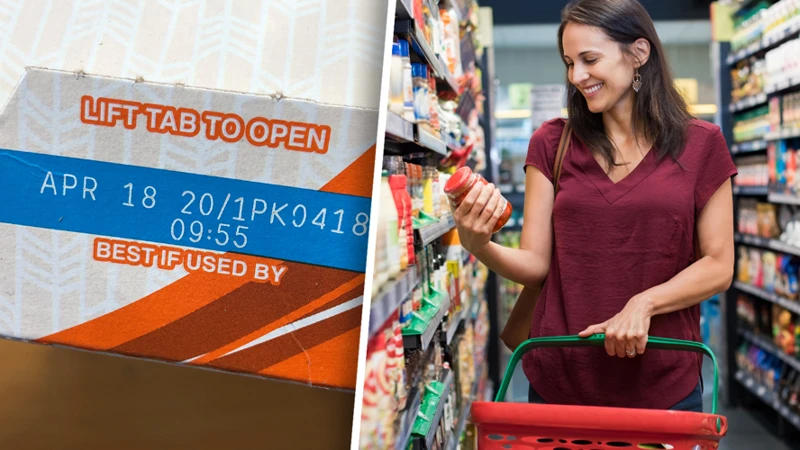
Understanding expiration dates and shelf life is crucial for anyone who wants to maintain a healthy and sustainable lifestyle. Expiration dates refer to the date when a particular product is no longer safe for consumption, while shelf life indicates the estimated time during which a product remains fresh.
If you don’t pay attention to these dates, you may end up consuming spoiled or expired food. This can make you sick and can also be a waste of money, as you’ll have to throw out unused items. Certain products can become harmful over time, even before the indicated expiration date. For example, consuming rancid oil or spoiled meat can lead to food poisoning. It’s vital to know the difference between expiration dates and shelf life, and how to manage them appropriately.
There are several reasons why it’s essential to understand expiration dates and shelf life. Firstly, it helps you to avoid food wastage. You can prevent throwing away unused items by consuming them as per the expiration dates or by storing them correctly. Additionally, understanding shelf life can prevent you from buying products that you’ll not be able to consume within the given time. By choosing fresh products with longer shelf life, you can reduce food wastage and save money.
Secondly, consuming expired or spoiled food can have adverse health effects. It can lead to food poisoning, bacterial infections, or foodborne illnesses. Some people may be more susceptible to infections, such as pregnant women, children, and the elderly. It’s crucial to understand the safety guidelines and storage instructions for various kinds of foods.
Lastly, understanding expiration dates and shelf life can help in making smart purchasing decisions. This can help you save money while staying healthy. With proper knowledge of these dates, you can make informed decisions about buying fresh produce (like fruits and vegetables) in bulk, purchasing meat and fish in large quantities or buying healthy snacks in bulk for work and travel. By following the correct storage and preservation techniques, you can enjoy the benefits of bulk purchases without wasting any food.
Understanding expiration dates and shelf life is vital for healthy eating habits and for reducing food waste. By organizing your pantry, freezing food and using preservation techniques, and understanding label language and packaging labels, you can ensure that your food remains fresh and safe. By making smart purchasing decisions only buying what you need, and buying in bulk, you can save money and live a more sustainable lifestyle for healthy staples bulk diet (check our guide for more information).
Tips for Managing Expiration Dates and Shelf Life
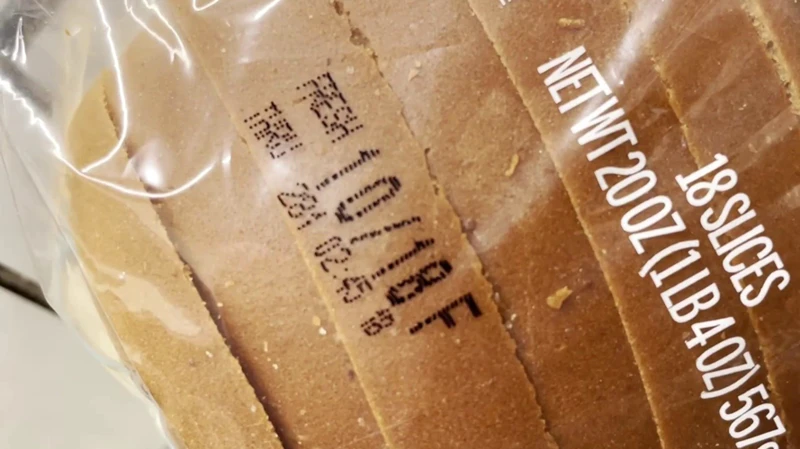
Proper management of expiration dates and shelf life is crucial for ensuring that you get the most out of your bulk purchases. Here are some tips for managing your bulk items:
One of the easiest ways to keep track of expiration dates is to organize your pantry and fridge. Always store the newest items at the back so that you use the older ones first. You can also use labels or markers to indicate when an item was opened or when it needs to be used up. Keeping your food items organized also helps to avoid accidentally buying duplicates of items you already have.
Not all food items can be frozen, but many can. Freezing is a great way to extend the shelf life of your bulk purchases. For example, you can buy a large package of meat and freeze individual portions, which can then be thawed and used as needed. Similarly, you can freeze excess bread or baked goods to be used later. However, it is important to read the packaging to understand how to properly freeze, thaw, and store the item.
There are many preservation techniques that can help prolong the life of your bulk purchases. For example, canning fruits and vegetables is a great way to preserve them for long periods of time. Pickling is another technique that can add flavor and prolong the shelf life of certain vegetables. Dehydrating fruits and vegetables is another great way to preserve them and make them last longer.
By implementing these tips, you can ensure that your bulk purchases last longer and are not wasted. This can save you money in the long run and reduce food waste. To learn more about saving money through bulk buying and healthy eating, check out our article on the topic.
Organize Your Pantry and Fridge
If you’re buying in bulk, it’s important to properly organize and store your food to avoid wasting it. Proper organization can help you keep track of what you have and when it expires. Plus, it can make meal prep and grocery shopping easier. Here are some tips for organizing your pantry and fridge:
Freezing Food
When it comes to managing expiration dates and shelf life, freezing food can be a valuable tool. Freezing food can help to extend its shelf life and prevent it from going bad. However, there are certain guidelines that should be followed to ensure that the food stays fresh and safe to eat. Here are a few tips for freezing food properly:
| Tip #1: | Make sure that the food is wrapped tightly in plastic wrap or sealed in an airtight container to prevent freezer burn and to keep out any air that could cause spoilage. |
| Tip #2: | Label the food with the date that it was frozen so that you can keep track of how long it has been in the freezer. |
| Tip #3: | Be sure to freeze the food as soon as possible after it is cooked or prepared to prevent bacteria growth. |
| Tip #4: | Freeze food in small portions so that you can thaw only what you need instead of having to thaw a large amount and risk waste. |
| Tip #5: | Not all food is suitable for freezing. Some foods can become mushy or spoil quickly after being frozen. Be sure to do your research or consult a food safety expert to determine which foods are safe to freeze. |
By following these tips for freezing food, you can significantly reduce food waste while also maximizing the shelf life of the foods that you purchase in bulk. Just be sure to take the necessary precautions to ensure that the food you freeze is safe to eat and remains fresh for as long as possible.
Using Preservation Techniques
One way to extend the life of your food is by using preservation techniques. These techniques can help keep your food fresh for longer periods of time, reducing the amount of waste you generate.
| Preservation Method | Description |
|---|---|
| Canning | This involves heating food in jars or cans to kill bacteria and seal the container to prevent contamination. Canned food can last for years. |
| Drying | Drying removes moisture from food, making it resistant to bacterial growth. Dried food can last for months, even years. |
| Freezing | Freezing can preserve the quality of many foods for quite some time, especially if they are packaged appropriately. |
| Pickling | Pickling involves soaking food in a solution of acid (usually vinegar), salt, and sometimes sugar, which helps prevent bacterial growth. Pickled food can last for several months. |
| Smoking | Smoking involves exposing food to smoke from burning wood, which helps to kill bacteria and adds flavor to the food. Smoke-cured food can last for weeks. |
| Jarring | Jarring involves placing food in a jar and submerging it in hot water to create a vacuum seal. Food stored in a jar can last for several weeks. |
| Salting | Salting can be used to preserve meat and fish by removing moisture and inhibiting bacterial growth. Salted food can last for several weeks. |
Using these preservation techniques can help to reduce waste by extending the shelf life of your food. Be sure to research the specific technique and suitability for the type of food you are trying to preserve.
Understanding Labels
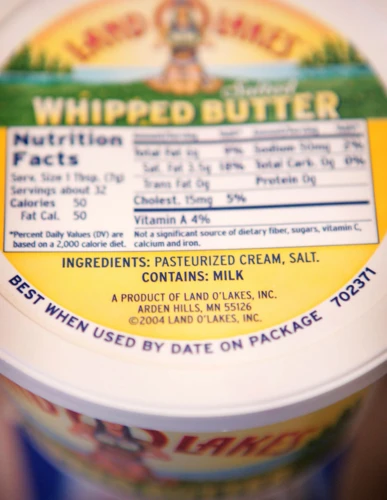
Labels on food packaging can be confusing and overwhelming, but they are important when it comes to understanding expiration dates and shelf life. The information on a label can help you determine how long a product will last and how to properly store it.
Label Language: Understanding the language used on labels is crucial. Terms such as “sell by,” “best by,” and “use by” all have different meanings. A “sell by” date is when the store needs to sell the product by, but it can still be consumed after that date. “Best by” dates suggest the quality of the product, but it is still safe to consume after this date. “Use by” dates are the most important, as they indicate when the product is no longer safe to consume.
Packaging Labels: Product labels can also indicate packaging methods that can affect shelf life. For example, vacuum-sealed or nitrogen-flushed packaging can extend the life of a product.
It’s important to pay attention to language and packaging labels to ensure that products are being stored and consumed safely. By understanding these labels, you can make informed decisions about how long to keep products and when to dispose of them.
Label Language
When it comes to understanding expiration dates and shelf life, one of the key components is deciphering the label language used on the packaging. This can be a confusing task, as different terms are used to convey different meanings. It’s important to be able to differentiate between terms such as “sell by,” “use by,” and “best by,” to ensure that you are consuming food that is safe and fresh. Let’s take a closer look at some common label language found on food products.
Packaging Labels
When it comes to understanding expiration dates and shelf life, paying close attention to packaging labels is crucial. Manufacturers use packaging labels to inform consumers about the product’s ingredients, storage instructions, and expiration dates. It’s essential to familiarize oneself with the language used in packaging labels so that they can make informed decisions when shopping for products.
Label Language
The language used on packaging labels can be confusing, but it’s essential to understand it to ensure that the products meet the customer’s needs. Some of the common buzzwords found on packaging labels include:
“Sell-by” – This is the date that the retailer should sell the product by. It does not mean that the product is no longer safe to consume after that date.
“Use-by” – This is the date that the manufacturer recommends that the product should be used by for best quality.
“Best if used by” – This is similar to “use-by” and is the date that the manufacturer recommends that product be used by for best quality.
“Expires on” – This is the date that the manufacturer recommends that the product should be used by because it might not be safe or of good quality after that date.
Packaging Labels
Packaging labels are full of important information that consumers should read carefully. The information includes the name of the product, ingredients, nutritional information, serving size, and the expiration date. The table below explains some of the essential information typically found on packaging labels.
| Label | Description |
|---|---|
| Net weight | The weight of the product excluding the packaging |
| Ingredients list | A list of all the ingredients used in the product, in descending order by weight |
| Nutrition facts | Information about the product’s nutritional content, such as calories, fat, protein, and carbohydrates |
| Serving size and servings per container | The suggested serving size and how many servings are in one package |
| Allergen information | Information about any allergens used in the product, such as nuts, dairy, and soy |
| Expiration date | The date that the manufacturer recommends that the product should be used by for best quality or safety |
Becoming familiar with expiration dates and shelf life goes beyond just taking note of the date on the package. Taking time to study different labeling terms goes a long way in ensuring your food is eaten suitably and some of the frequently used terms are Sell-by, Use-by, Best if used by and Expires on. Paying close attention to packaging labels is a smart step to take for conscious consumers trying to make informed decisions.
Common Misconceptions about Expiration Dates and Shelf Life
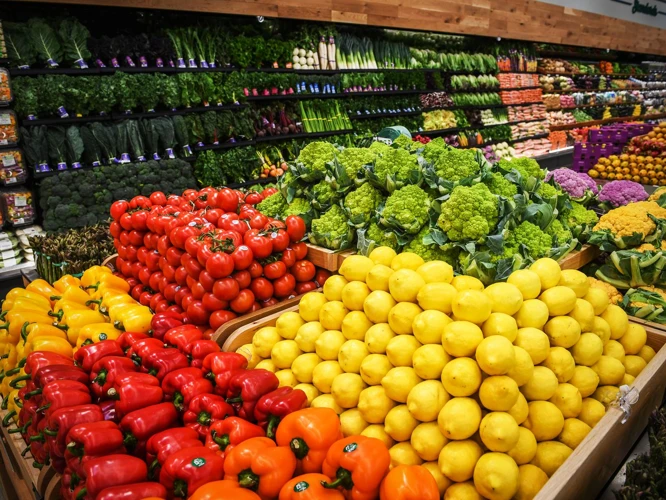
Despite their importance, there are several misconceptions surrounding expiration dates and shelf life. Clearing up these misunderstandings can help consumers make better decisions about their food choices and reduce food waste.
Expiration Dates are Not Set in Stone: Many people assume that expiration dates on food packages mean that the food is no longer safe to eat after this time, but this is not necessarily true. Expiration dates are simply a manufacturer’s estimate of when the food product will no longer be at its peak quality. After this date, the quality of the product may begin to decline, but it doesn’t necessarily mean that the food is unsafe to eat.
‘Best By’ Dates are Not Expiration Dates: Many food products have a date labeled as “best by,” “sell by,” or “use by.” These dates are meant to ensure that the consumer has the best quality product possible, but they do not indicate the safety of the food. In fact, food that is past its “best by” date may still be perfectly safe to eat, but the quality of the product may be affected.
Expired Food is Not Always Bad Food: Another common misconception is that once food has passed its expiration date, it must be thrown away. While it’s important to pay attention to expiration dates and shelf life, there are many foods that can still be consumed safely even after they have expired. In some cases, expiration dates may be conservative estimates meant to ensure that the product is at peak quality, but the food may still be safe to eat for some time after this date.
It’s important to remember that while expiration dates and shelf life are important indicators of product quality and safety, they should not be the only factors used to determine whether or not a food item is safe to consume. Consumers should also pay attention to the appearance, smell, and texture of the food product to ensure that it is still safe to eat. By properly understanding expiration dates and shelf life, consumers can reduce food waste, make informed choices about their food purchases, and ensure that they are consuming safe and healthy food.
Expiration Dates are Not Set in Stone
Despite what some people may think, expiration dates are not always a hard and fast rule. There is often some leeway when it comes to the expiration dates on food products, thanks to the differences in food storage conditions and other factors. For instance, some products may remain safe to eat for days or even weeks past their stated expiration date, especially if they have been stored correctly. In this section, we will explore some common misconceptions surrounding expiration dates and highlight some of the important things to keep in mind when it comes to food safety and extending the shelf life of your pantry staples.
‘Best By’ Dates are Not Expiration Dates
It is a common misconception that ‘Best By’ dates on food labels indicate the expiration date of the product. However, this is not the case. ‘Best By’ dates are simply an indication of when the product will be at its optimal quality and flavor. It is important to note that this date does not mean that the product is no longer safe to consume after that date.
Consuming products after the ‘best by’ date has passed may still be perfectly safe, especially if the product has been properly stored and handled. It is important to use your judgment and senses when determining whether or not a product has gone bad. If the product smells off, looks strange or has a strange taste, it is best to avoid consuming it.
To further clarify, the ‘best by’ date is not an indication of when a product will expire or when it will become unsafe to eat. It simply indicates the date when the product is believed to be at its best quality. It is always important to check for other signs of spoilage, such as mold, discoloration or a sour smell, before consuming any product after its ‘best by’ date.
To summarize, ‘best by’ dates are not expiration dates, and it is perfectly acceptable to consume a product after its ‘best by’ date if it has been properly stored and shows no signs of spoilage. However, it is always important to use your senses and judgment when determining whether or not a product is safe to consume.
Expired Food is Not Always Bad Food
It’s a common misconception that expired food is always bad food. While it’s true that certain foods are more susceptible to spoiling and becoming harmful after their expiration dates, others can still be safe to consume well past that date. Here are some examples:
| Foods | Can they still be consumed after expiration date? |
|---|---|
| Dried Goods (pasta, rice, beans) | Yes |
| Canned Goods | Yes, as long as the can is intact and the food looks and smells normal |
| Frozen Foods | Yes, as long as they have been stored properly and show no signs of freezer burn |
| Bakery Items (bread, pastries) | It depends. These items may be stale or moldy, but can still be consumed if they look and smell normal. Use caution. |
| Dairy Products | It depends. Some dairy products, such as hard cheeses and yogurt, may still be safe to consume after their expiration date if they show no signs of spoilage. Other dairy products, such as milk and soft cheeses, are more likely to spoil and should not be consumed after their expiration date. |
It’s important to note that while some expired foods may still be safe to consume, they may not taste as good or have the same nutritional value as when they were fresh. It’s also important to use caution and trust your senses when consuming expired foods – if something smells rotten or looks off, it’s always better to be safe than sorry and throw it out.
Smart Purchasing Habits to Reduce Waste
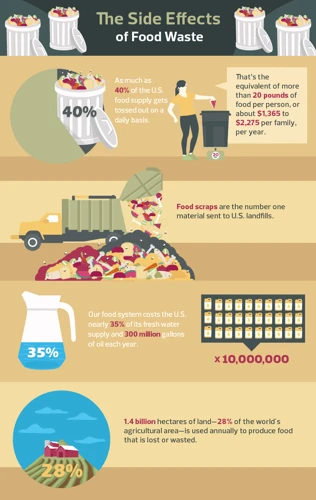
One of the key ways to reduce waste when buying in bulk is to practice smart purchasing habits. It’s important to consider how much of a product you actually need before making a purchase. This can help prevent food spoilage and unnecessary waste. Here are some helpful tips for making smarter purchasing decisions:
Buying Only What You Need: When shopping for groceries, it’s important to create a list of the essentials you need to avoid impulsive purchases. Make sure you assess your pantry and fridge before heading to the store so that you don’t end up buying things that you already have at home. If you only need a small amount of an ingredient for a recipe, consider purchasing it in bulk rather than buying a pre-packaged option.
Bulk Purchasing vs. Standard Purchasing: Buying in bulk can be a great way to save money and reduce waste, but it’s not always the best decision. For frequently-used items like grains, it’s usually a good idea to purchase in bulk as you’re likely to use them up before they expire. However, buying in bulk isn’t always practical for perishable items like fresh produce, which have a shorter shelf life. In these cases, standard purchasing may be a better option to avoid waste.
By following these tips, you can reduce waste and save money when buying in bulk. It’s all about being mindful of your purchases and taking the time to assess your needs before making a decision. Additionally, it’s important to remember that you can always adjust your purchasing habits as you go along to find the approach that works best for you.
Buying Only What You Need
One important step in managing expiration dates and shelf life is being mindful of buying only what you need. It can be tempting to stock up on bulk items or take advantage of sales, but buying too much can lead to food waste and expired products. Being mindful of your shopping habits and planning ahead can help you reduce waste and save money in the long run. Let’s explore some ways to practice smart purchasing habits to make the most of your groceries.
Bulk Purchasing vs. Standard Purchasing
When it comes to purchasing food, there are different options available depending on your needs and preferences. One option is to purchase food in standard quantities, while another is to purchase food in bulk. There are advantages and disadvantages to both options, so it’s important to consider which option is best for you.
Bulk Purchasing involves buying larger quantities of food items at once, usually in packaging that is much larger than what is typically found on supermarket shelves. This option can be appealing for several reasons, including:
| Advantages | Disadvantages |
| – Generally cheaper per unit or weight – Can reduce the number of trips to the store – Less packaging waste – More control over the quantity purchased |
– Requires more space for storage – May have shorter expiration dates – May have a limited selection of items available – Can be difficult to transport |
Standard Purchasing involves buying food items in smaller quantities, usually what can be found on supermarket shelves. This option can also have its own advantages and disadvantages:
| Advantages | Disadvantages |
| – Easier to transport – Takes up less storage space – More variety of items available – Longer expiration dates |
– Generally more expensive per unit or weight – May require more trips to the store – More packaging waste – Less control over the quantity purchased |
Ultimately, the decision to purchase food items in bulk or in standard quantities will depend on several factors, including your storage and transportation capabilities, the frequency with which you use the item, the expiration dates of the item, and the variety of items available. By weighing the advantages and disadvantages of each option, you can make an informed decision that is best suited for your needs.
The Benefits of Buying in Bulk for Healthy Eating
When it comes to healthy eating, buying in bulk can offer numerous benefits. One of the most obvious benefits of buying in bulk is cost savings. Buying larger quantities of food at once usually results in a lower price per unit, which can be especially helpful when trying to stick to a budget while still eating nutritiously.
Not only does buying in bulk save money, it can also reduce packaging waste. Often, items sold in bulk come with little or no packaging, which means potentially less waste ending up in landfills.
Another benefit of buying in bulk is the ability to control portion sizes. When purchasing pre-packaged items, it can be tempting to eat more than the recommended serving. However, buying in bulk allows you to measure out exactly how much you need, making it easier to stick to proper portion sizes.
Bulk items also offer the flexibility of being able to use the exact amount needed for a recipe, rather than having to buy a whole new package for just a small amount. This is not only cost-effective, but it also reduces the amount of waste that would occur otherwise.
It’s worth noting that buying in bulk doesn’t necessarily mean buying unhealthy food items in large quantities. Many grocery stores now offer bulk options for healthy staples such as whole grains, nuts, and dried fruits.
Buying in bulk can be a smart choice for those looking to save money, reduce waste, and have more control over the portion sizes and ingredients in their food.
Cost Savings
When it comes to buying food, cost is always a major consideration. Buying in bulk can often provide a significant cost savings compared to purchasing individual items. By purchasing larger quantities of food, the cost per unit is typically lower. This can be a great option for those who are looking to save money on groceries, especially when it comes to staple items that are regularly used. Additionally, the savings can add up over time, resulting in substantial long-term benefits for your budget. So, let’s dive into the benefits of cost savings when purchasing food in bulk.
Reduced Packaging Waste
Buying in bulk is not only beneficial for your wallet and overall health, but it also has a positive impact on the environment. One of the main advantages of buying in bulk is reducing packaging waste. Here are some ways in which this practice helps to minimize the amount of packaging waste we create:
- Less Single-Use Plastic – Often times, individually wrapped products come in excessive amounts of plastic packaging that is rarely reusable. When buying in bulk, you reduce the need for single-use packaging and help decrease the amount of plastic waste that enters the landfill or the ocean.
- Minimized Cardboard and Paper Waste – Bulk goods are typically packaged in large, durable containers that can be refilled or repurposed, while individually packaged items often come in cardboard boxes or paper bags that are not reusable or durable.
- Lower Carbon Footprint – Shipping bulk quantities of products is often more efficient than shipping individual packages, as less packaging is needed to transport the items, reducing the carbon footprint of transportation.
- Less Energy Consumption – The production of packaging products, such as plastic and paper, requires a significant amount of energy. By reducing packaging waste, we can lower the amount of energy required to produce these products, resulting in a reduced environmental impact.
Buying in bulk is an environmentally-friendly practice that reduces the amount of packaging waste and can help lower our carbon footprint. By investing in reusable containers, we can minimize our environmental impact and create a more sustainable future.
Conclusion
In conclusion, understanding expiration dates and shelf life is crucial for maintaining healthy eating habits and minimizing food waste. By properly organizing your pantry and fridge, freezing food, and using preservation techniques, you can extend the shelf life of many foods and save money in the process. Additionally, it is important to understand label language and packaging labels in order to make informed choices when purchasing food items.
Common misconceptions such as thinking that expiration dates are set in stone or that expired food is always bad can lead to unnecessary waste. By adopting smart purchasing habits, such as buying only what you need and considering bulk purchasing, you can reduce waste and save money in the long run.
Buying in bulk not only provides cost savings and reduced packaging waste, but it can also encourage healthier eating habits. By purchasing bulk items like whole grains and fresh produce, you have the opportunity to incorporate more nutrient-dense foods into your diet.
Overall, being mindful of expiration dates and shelf life can have both financial and health benefits. By taking a few simple steps, you can reduce waste and make smarter, healthier choices when it comes to buying and consuming food.
Frequently Asked Questions
What is the difference between expiration dates and shelf life?
Expiration dates indicate the last date a product should be consumed, while shelf life refers to the length of time that a product can be stored before its quality starts to deteriorate.
Why is it important to understand expiration dates and shelf life?
Understanding expiration dates and shelf life can help you avoid consuming expired or spoiled food, which can be harmful to your health. It can also help you reduce food waste and save money by properly managing your food storage.
How can I manage expiration dates and shelf life in my pantry and fridge?
You can manage expiration dates and shelf life by organizing your pantry and fridge, freezing food, and using preservation techniques such as canning or pickling.
How can I understand labels on food products?
You can understand labels on food products by reading label language carefully, paying attention to packaging labels, and knowing the difference between “best by” dates and expiration dates.
What are some common misconceptions about expiration dates and shelf life?
Some common misconceptions about expiration dates and shelf life include the belief that expiration dates are always accurate, that “best by” dates are the same as expiration dates, and that expired food is always bad.
What are some smart purchasing habits to reduce food waste?
You can reduce food waste by buying only what you need and by choosing bulk purchasing instead of standard purchasing.
What are the benefits of buying in bulk for healthy eating?
The benefits of buying in bulk include cost savings and reduced packaging waste, which can help you eat healthier and save money.
What are some ways to freeze food properly?
Some ways to freeze food properly include using wrap or freezer bags to reduce air exposure, labeling and dating items, and keeping a freezer inventory to help you manage what you have on hand.
How can I ensure that bulk purchases are safe?
You can ensure that bulk purchases are safe by following proper food safety guidelines, checking expiration dates and packaging, and avoiding bulk purchases of perishable items that you may not be able to consume before they spoil.
How can I stay on top of managing expiration dates and shelf life?
You can stay on top of managing expiration dates and shelf life by regularly checking your food inventory, rotating items by expiration date, and keeping a list of what you have on hand to avoid overbuying or forgetting about items.

